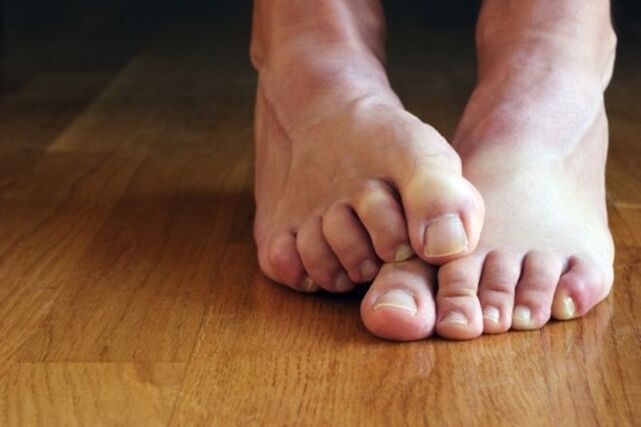Nail fungus is an intractable disease, so diagnosing symptoms early in the disease will greatly speed up its treatment process. Also, when the first signs of illness are detected, you will be able to protect your family/relatives from infection, as in most cases (70% to 80%) nail and skin fungus is spread among family members.
how symptoms appear

First, nail fungus manifests as an unpleasant odor and itching. If you've started noticing that your feet are suspiciously often smelling bad (change your socks promptly and maintain proper hygiene), it's a good reason to see your doctor to diagnose the disease.

The next symptom of the fungus is a change in the color of the nail plate. In this case, the edges of the nail are more likely to be damaged. Small grooves and white spots appear, which eventually begin to grow.

If proper measures are not taken, the plate will continue to deform and the fungus will destroy new areas of the nail until the infection is complete.
Another characteristic symptom of onychomycosis is discoloration of the nail plate. It can acquire a variety of shades due to exposure to fungal spores. It's brown and yellow in most cases, but it also acquires a darker color when exposed to mold or yeast.
Additionally, one of the signs of the disease is a change in the structure of the nail. It can change shape very quickly and start to crumble.
other features of the disease
Fungus is a very insidious disease, as the spores of this infection are present on the body most of the time and only enter an active phase under certain conditions:
- decrease in immunity
- diabetes
- skin disease
- Mechanical damage to skin of legs/arms or nails.
So if you have one of these signs, you should be more careful. If you damaged your nails or wore tight shoes at the nail salon, it is recommended to use one of several antifungal preventatives and apply it to the damaged area no more than once a week.
What to do if you notice symptoms of fungus?
- If you notice symptoms of onychomycosis, be sure to see a dermatologist in the hospital and get proper testing done. There are more than 50 kinds of fungi that cause disease to the human body. If you start the treatment yourself, it is likely to be ineffective and waste precious time.
- After passing all the necessary tests, perform all procedures to treat the fungus on time, strictly as prescribed. Remember, folk remedies are bestin the complexUse antifungal medicines and don't forget to consult your doctor.
everything! These are the actions you need to take when you notice the first signs of onychomycosis. Do not attempt to self-diagnose, and furthermore, do not prescribe medication.















